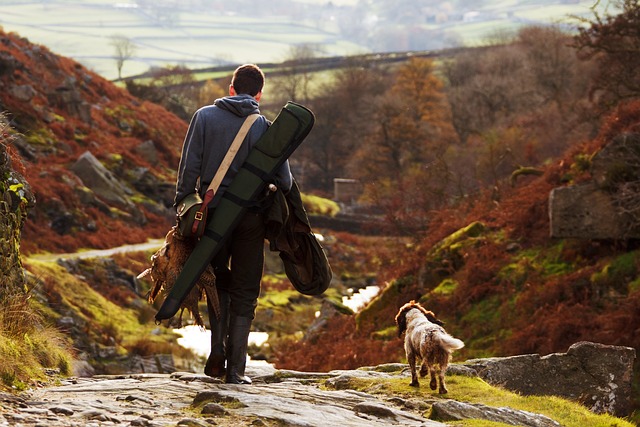Hunting and hiking are both popular outdoor activities that allow individuals to immerse themselves in nature and enjoy the great outdoors. However, many hikers may wonder if it is safe to hike on trails where hunting is allowed or if it is even legal.
In this post, I will explore the rules and regulations surrounding hunting on hiking trails and discuss the potential safety concerns for hikers and hunters. By understanding the guidelines for hunting on hiking trails, hikers and hunters can safely coexist and enjoy the beauty of nature. Let’s dive right in!
The legality of hunting on hiking trails
The legality of hunting on hiking trails varies depending on the region or country. In some areas, hunting on hiking trails may be allowed with certain restrictions, while in others it may be completely prohibited. It is essential to research the laws and regulations in your specific area before embarking on a hiking trip.
For example, in the United States, hunting on hiking trails is generally not allowed in national parks and national wildlife refuges. However, some state parks and forests may allow hunting on designated trails and areas during hunting season. It is crucial to check with the appropriate authorities to determine where hunting is allowed and what permits or licenses may be required.
Additionally, some regions may have specific regulations regarding the type of hunting that is allowed, such as archery or rifle hunting. It is essential to understand these regulations and follow them to ensure that you are hunting legally and responsibly.
it is important to note that allowing hunting on hiking trails can pose potential safety concerns for both hikers and hunters. Hikers should take necessary precautions to ensure their safety, such as wearing brightly colored clothing and staying on designated trails. Hunters should also be aware of their surroundings and avoid shooting toward or near hiking trails.
Ultimately, whether or not you can hunt on hiking trails, hikers and hunters must respect each other’s activities and share the trail safely.
Safety concerns for hikers and hunters
Allowing hunting on hiking trails can pose potential safety concerns for both hikers and hunters. It is crucial to take precautions to ensure the safety of everyone involved.
For hikers, the presence of hunters on hiking trails can be alarming and may cause anxiety or fear. It is important for hikers to wear brightly colored clothing, such as blaze orange or neon green, to increase their visibility to hunters. Hikers should also stay on designated trails and avoid wandering off into areas where hunting may be allowed. If hikers encounter hunters on the trail, they should announce themselves in a clear and calm voice to avoid startling the hunters.
For hunters, it is important to be aware of hikers on the trail and take necessary precautions to ensure their safety. Hunters should never shoot towards or near hiking trails, and they should be aware of their surroundings at all times. Hunters should also avoid wearing clothing that blends in with the environment and instead wear brightly colored clothing to increase their visibility to hikers.
It is also essential for both hikers and hunters to be respectful of each other’s activities and share the trail. Hikers should be aware of the hunting season and avoid hiking in designated hunting areas during that time. Hunters should also be mindful of hikers on the trail and try to avoid hunting during peak hiking times.
By taking safety precautions and being respectful of each other’s activities, hikers and hunters can coexist safely on hiking trails.
Alternatives to hunting on hiking trails
While some regions may allow hunting on hiking trails, it may not be the best option for hunters or hikers. There are several alternatives to hunting on hiking trails that may be safer and more suitable for hunting.
One option is to hunt in designated hunting areas or wildlife management areas. These areas are specifically designated for hunting and may offer a safer environment for both hunters and hikers.
Another option is to hunt on private land with the landowner’s permission. This can provide hunters with a more controlled and secure environment for hunting, while also avoiding potential conflicts with hikers.
Hunters may also consider participating in hunting clubs or organizations that offer access to private land for hunting.
For hikers, it is important to research the trails they plan to hike to determine if hunting is allowed in the area. If hunting is allowed, hikers may want to consider hiking in areas that are designated as non-hunting zones.
Overall, there are several alternatives to hunting on hiking trails that may be safer and more suitable for both hunters and hikers. By exploring these options, hunters, and hikers can enjoy their respective activities without the potential risks and conflicts that can arise on shared trails.
Conclusion
In conclusion, hunting and hiking are both enjoyable outdoor activities that allow individuals to experience nature and the great outdoors. While you may you hunt on hiking trails in some regions, it is essential to research the laws and regulations in your area and take necessary precautions to ensure the safety of everyone involved.
Hikers and hunters can coexist safely on hiking trails by being respectful of each other’s activities, taking safety precautions, and sharing the trail. Additionally, there are several alternatives to hunting on hiking trails that may be safer and more suitable for both hunters and hikers, such as designated hunting areas or private land.
By understanding the rules and regulations surrounding hunting and hiking and prioritizing safety, individuals can enjoy these outdoor activities without conflict or potential risks. Whether you are a hiker or a hunter, it is important to be aware of your surroundings, respect other individuals’ activities, and enjoy the beauty of nature responsibly.
Discover more exciting outdoor activities on our main page.








